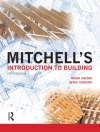Dynamics is increasingly being identified by consulting engineers as one of the key skills which needs to be taught in civil engineering degree programs. This is driven by the trend towards lighter, more vibration-prone structures, the growth of business in earthquake regions, the identification of new threats such as terrorist attack and the increased availability of sophisticated dynamic analysis tools.Martin Williams presents this short, accessible introduction to the area of structural dynamics. He begins by describing dynamic systems and their representation for analytical purposes. The two main chapters deal with linear analysis of single (SDOF) and multi-degree-of-freedom (MDOF) systems, under free vibration and in response to a variety of forcing functions. Hand analysis of continuous systems is covered briefly to illustrate the key principles. Methods of calculation of non-linear dynamic response is also discussed. Lastly, the key principles of random vibration analysis are presented – this approach is crucial for wind engineering and is increasingly important for other load cases. An appendix briefly summarizes relevant mathematical techniques. Extensive use is made of worked examples, mostly drawn from civil engineering (though not exclusively – there is considerable benefit to be gained from emphasizing the commonality with other branches of engineering). This introductory dynamics textbook is aimed at upper level civil engineering undergraduates and those starting an M.Sc. course in the area.
Martin Williams
Structural Dynamics [PDF ebook]
Structural Dynamics [PDF ebook]
Acquista questo ebook e ricevine 1 in più GRATIS!
Lingua Inglese ● Formato PDF ● Pagine 283 ● ISBN 9781482266009 ● Casa editrice CRC Press ● Pubblicato 2016 ● Scaricabile 3 volte ● Moneta EUR ● ID 7010040 ● Protezione dalla copia Adobe DRM
Richiede un lettore di ebook compatibile con DRM












